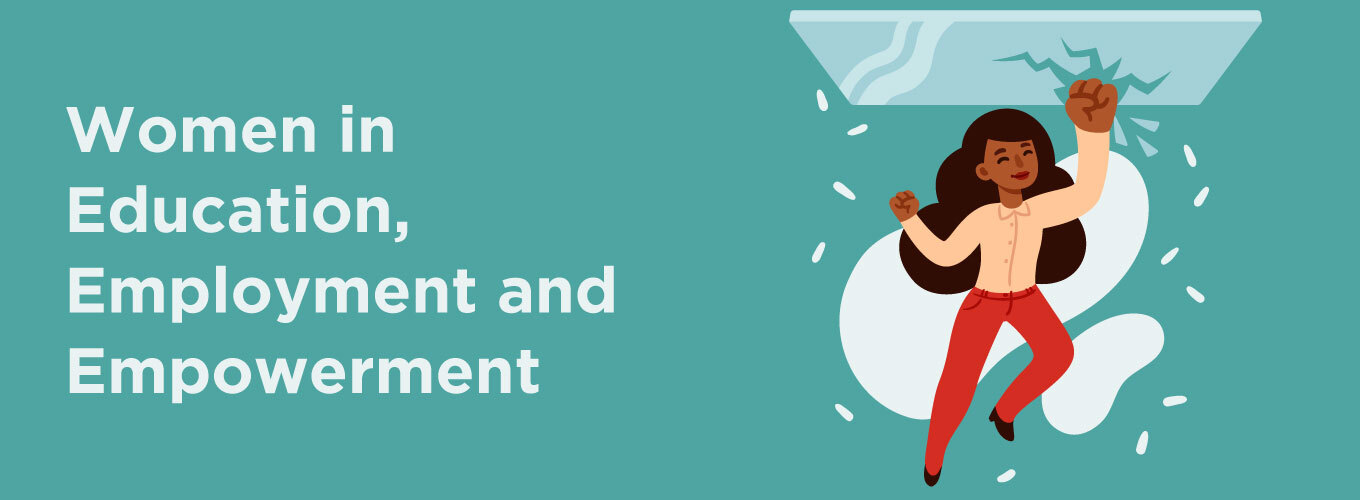Women in Education, Employment and Empowerment
In recent years, there has been a significant increase in the number of women entering both education and the workforce. Despite this progress, women still face many obstacles in both areas. In education, girls continue to face cultural and economic barriers to obtaining a quality education. In the workplace, women still earn less than men for the same work and are underrepresented in leadership positions.
Table of Contents
However, there are many efforts underway to break these barriers and promote greater equality for women in education and the workforce. Governments, NGOs, and private organizations are working to provide girls with access to quality education, and to create opportunities for women to advance in their careers.
Women in Education
One of the most effective ways to empower women in education and the workforce is through mentorship and sponsorship. By connecting women with experienced mentors and sponsors, they can gain the support, guidance, and advice they need to succeed in their careers. Mentorship and sponsorship programs can also help to break down gender stereotypes and promote diversity and inclusion in the workplace.
(i) Challenges faced by Women in Education
- Lack of access to education: Women in many parts of the world still face significant barriers to accessing education, particularly in developing countries. Poverty, cultural attitudes, and limited resources are just some of the factors that prevent girls from attending school.
- Gender-based discrimination: Women often face discrimination based on their gender, which affects their opportunities to access education and achieve their full potential.
- Societal expectations: Women are often expected to prioritize family and household responsibilities over their education, leading to early dropout and limited opportunities for academic and career advancement.
- Lack of female role models: The lack of female role models in education and various fields can be a significant barrier to women’s progress. This includes a lack of female teachers, professors, and leaders in education-related fields.
(ii) Strategies to Overcome Barriers
- Providing access to education: Governments and non-governmental organizations are working to provide girls with access to education by building schools, providing scholarships, and creating programs that address cultural and economic barriers.
- Addressing gender-based discrimination: Programs are being developed to address gender-based discrimination in schools and promote gender equality.
- Encouraging women’s empowerment: Efforts are being made to empower women by promoting their leadership and increasing their participation in decision-making processes. This includes programs that provide training and support for women to pursue careers in education and other fields.
- Raising awareness: Raising awareness about the importance of women’s education and the barriers they face can help to change societal attitudes and promote gender equality. This includes media campaigns, educational programs, and community outreach initiatives.
Women in Employment
The world of work has come a long way in terms of promoting gender equality, but there is still much progress to be made. Women continue to face numerous barriers in the workplace, including discrimination, unequal pay, and a lack of opportunities for advancement. In this blog, we will explore the challenges faced by women in employment and the strategies being used to overcome them.
(i) Challenges faced by Women in Employment
- Gender-based discrimination: Women often face discrimination in the workplace, including unequal pay, limited opportunities for advancement, and a lack of access to important networks and resources.
- Work-family balance: Women are often expected to prioritize family responsibilities over their careers, leading to a lack of opportunities for career advancement and professional development.
- Stereotyping and bias: Women are often subjected to gender-based stereotypes and biases, which can limit their opportunities for employment and career advancement. This includes assumptions about their skills and abilities, as well as their commitment to their careers.
(ii) Strategies to Overcome Barriers
Promoting gender equality: Governments, businesses, and non-governmental organizations are working to promote gender equality in the workplace through policies and programs that address discrimination, unequal pay, and limited opportunities for advancement.
- Supporting work-family balance: Efforts are being made to support women in balancing their work and family responsibilities, including flexible work arrangements and access to affordable childcare.
- Addressing bias and stereotypes: Programs are being developed to address gender-based stereotypes and biases in the workplace, including diversity and inclusion training, and promoting female representation in leadership positions.
Women in Empowerment
Empowerment is the process of enabling individuals to take control of their lives and reach their full potential. For women, empowerment is a key factor in overcoming the many barriers they face and achieving equality in all areas of their lives, including education, employment, and leadership. In this blog, we will explore the importance of women’s empowerment and the strategies being used to achieve it.
(i) Why Women’s Empowerment is Important
- Overcoming barriers: Empowerment is a critical tool for women to overcome the many barriers they face, including discrimination, unequal pay, and limited opportunities for advancement.
- Achieving equality: By empowering women, we can promote equality in all areas of their lives, including education, employment, and leadership. This leads to a more just and equitable world for all.
- Improving communities: Women’s empowerment leads to improved health, education, and economic outcomes for their families and communities, creating a positive impact on society as a whole.
- Unleashing potential: Empowerment enables women to reach their full potential, both personally and professionally, and make meaningful
In conclusion, while there is still much work to be done, women have made significant progress in education and the workforce. By breaking down barriers and promoting equality through mentorship, flexibility, and inclusivity, women can continue to advance and reach their full potential.










